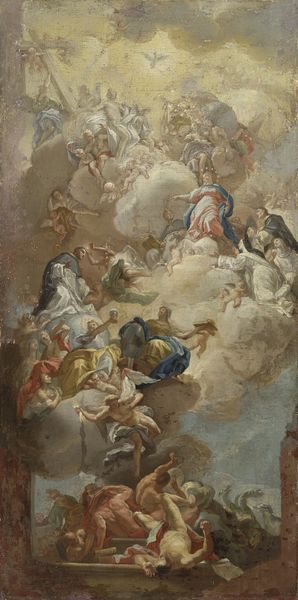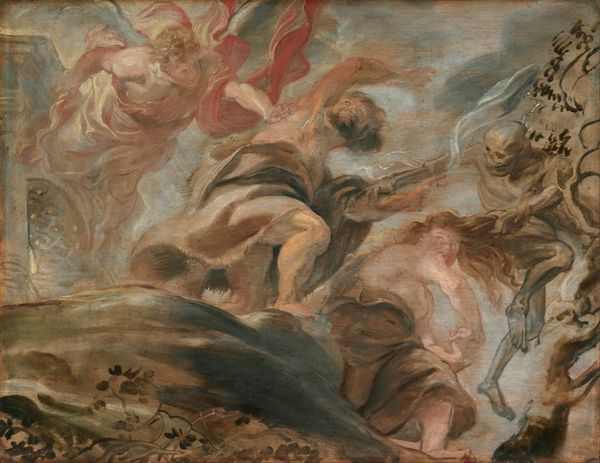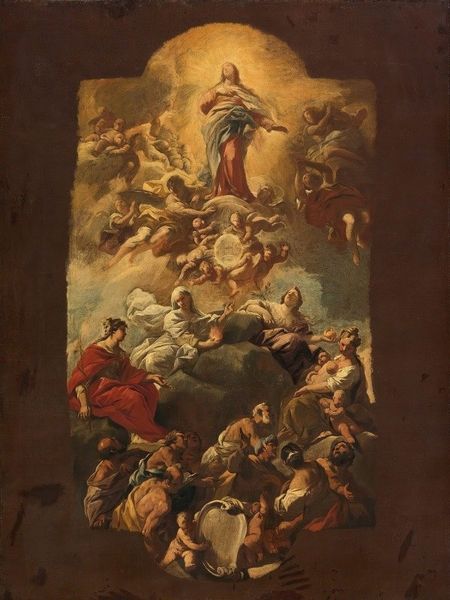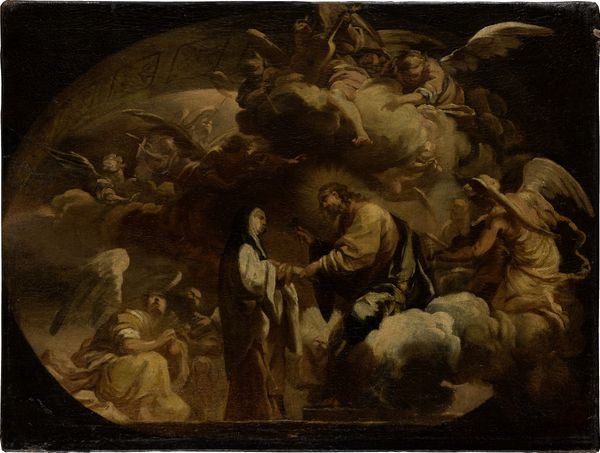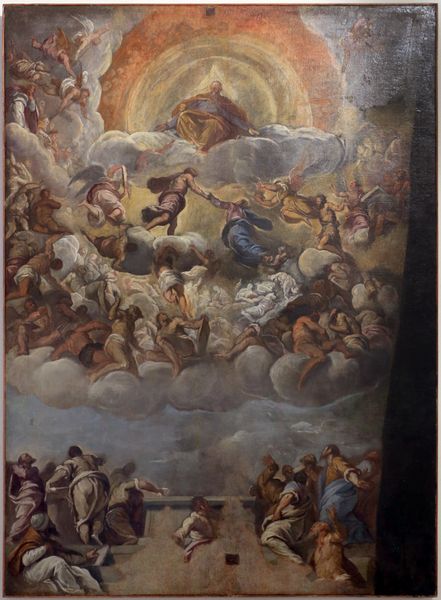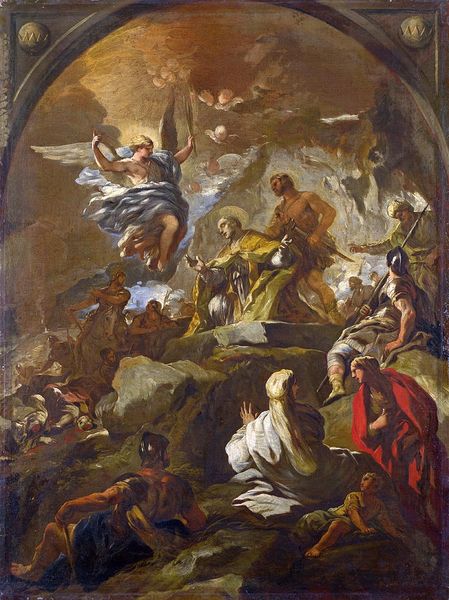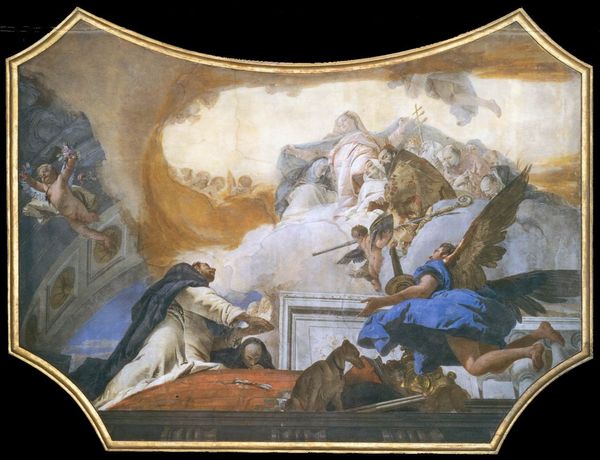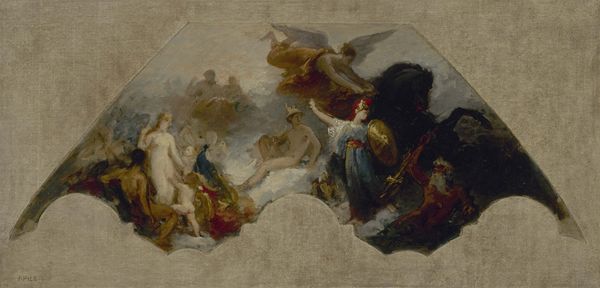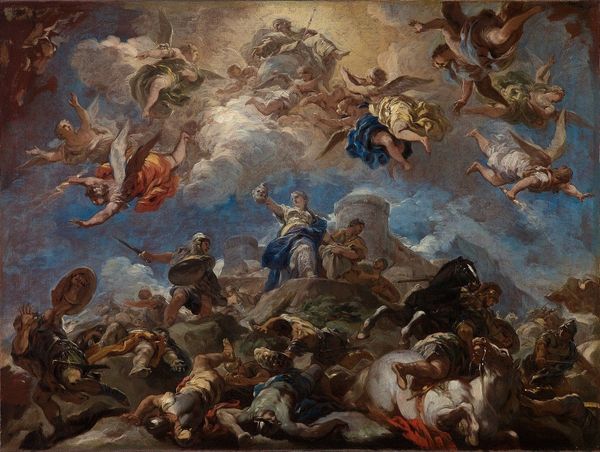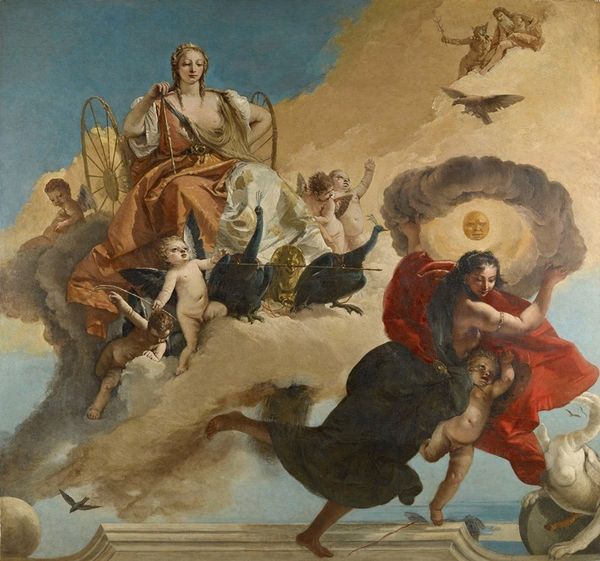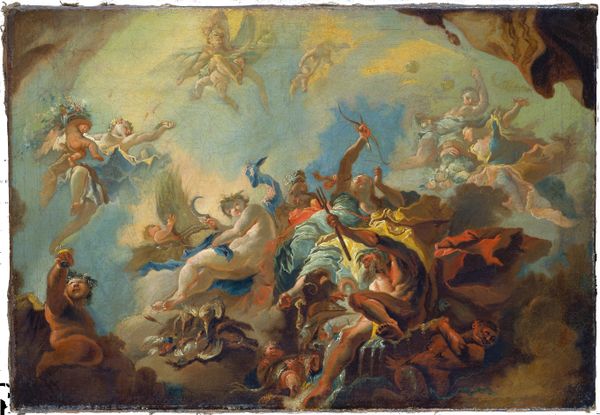
#
abstract painting
#
water colours
#
impressionist painting style
#
possibly oil pastel
#
fluid art
#
underpainting
#
painting painterly
#
watercolour bleed
#
watercolour illustration
#
watercolor
Copyright: Public domain
Curator: This is Giovanni Battista Gaulli's "St. Agnes in Glory." What strikes you first? Editor: The swirling clouds give it an almost dreamlike, ethereal quality. It feels very much of its time, invoking divine ascension, no? Curator: Precisely. Notice how Gaulli uses light and shadow, especially the masterful underpainting to guide the viewer's eye upwards, emphasizing the Baroque drama. Editor: The power dynamic is unmistakable. We see St. Agnes elevated, almost literally, into the bosom of the Holy Trinity, and yet… her triumph feels passive, absorbed by patriarchal religious structures. Does she even have agency here, or is she just a pawn in someone else's story? Curator: One could argue her acceptance is a testament to divine will, signified visually by the light radiating from the figures above. This celestial light creates depth through contrast and tonal modulation; the soft edges versus the focused intensity of illumination invite careful scrutiny. Editor: I think her representation here reflects a broader issue—the co-opting of female strength to serve institutional needs. We need to analyze these depictions within the context of religious doctrine, even as we admire the painterly skills. The cross looming to the left—what about its place here? Is this sacrifice, glory, or both? Curator: The cross is symbolic of sacrifice, pointing us to Agnes’s martyrdom. Gaulli subtly ties this sacrifice to an eternal reward, illustrating the essence of salvation through skillful figural arrangement and use of space. Note how negative space allows the viewer to fully engage with the emotional subject matter in the midst of formal constraints. Editor: The emotional weight, no doubt, is undeniable. But perhaps it also highlights how these stories historically sidelined so many in pursuit of one kind of virtue. There’s both beauty and deep, embedded messaging. Curator: Yes, perhaps these observations underscore the enduring ability of great art to incite contemplation on formal properties and ideological implications, centuries after creation. Editor: Ultimately prompting ongoing conversations around interpretation and the diverse contexts which intersect art history itself.
Comments
No comments
Be the first to comment and join the conversation on the ultimate creative platform.
